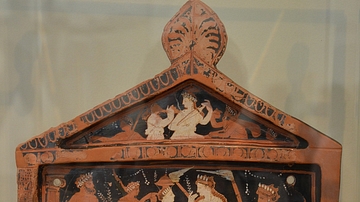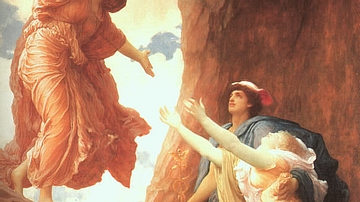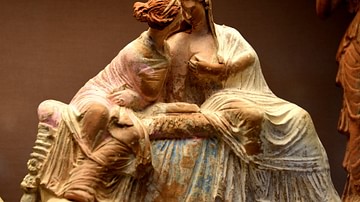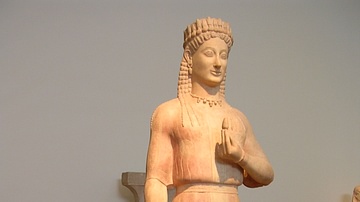Illustration
This is the largest and most important votive relief found at Eleusis. It represents the Eleusinian deities in a scene of mysterious rituel. On the left Demeter, clad in a peplos and holding a scepter in her left hand, offers ears of wheat to Triptolemos, son of Eleusinian king Keleos, to bestow on mankind. On the right Persephone, clad in a chiton and mantle and holding a torch, blesses Triptolemos with her right hand. This relief, dating to c. 440-430 BCE, was apparently famous in antiquity and was copied in the Roman period. (Archaeological Museum of Athens, Greece)
About the Author
Cite This Work
APA Style
Raddato, C. (2015, January 03). Eleusinian votive relief. World History Encyclopedia. Retrieved from https://www.worldhistory.org/image/3511/eleusinian-votive-relief/
Chicago Style
Raddato, Carole. "Eleusinian votive relief." World History Encyclopedia. Last modified January 03, 2015. https://www.worldhistory.org/image/3511/eleusinian-votive-relief/.
MLA Style
Raddato, Carole. "Eleusinian votive relief." World History Encyclopedia. World History Encyclopedia, 03 Jan 2015. Web. 14 Apr 2025.









